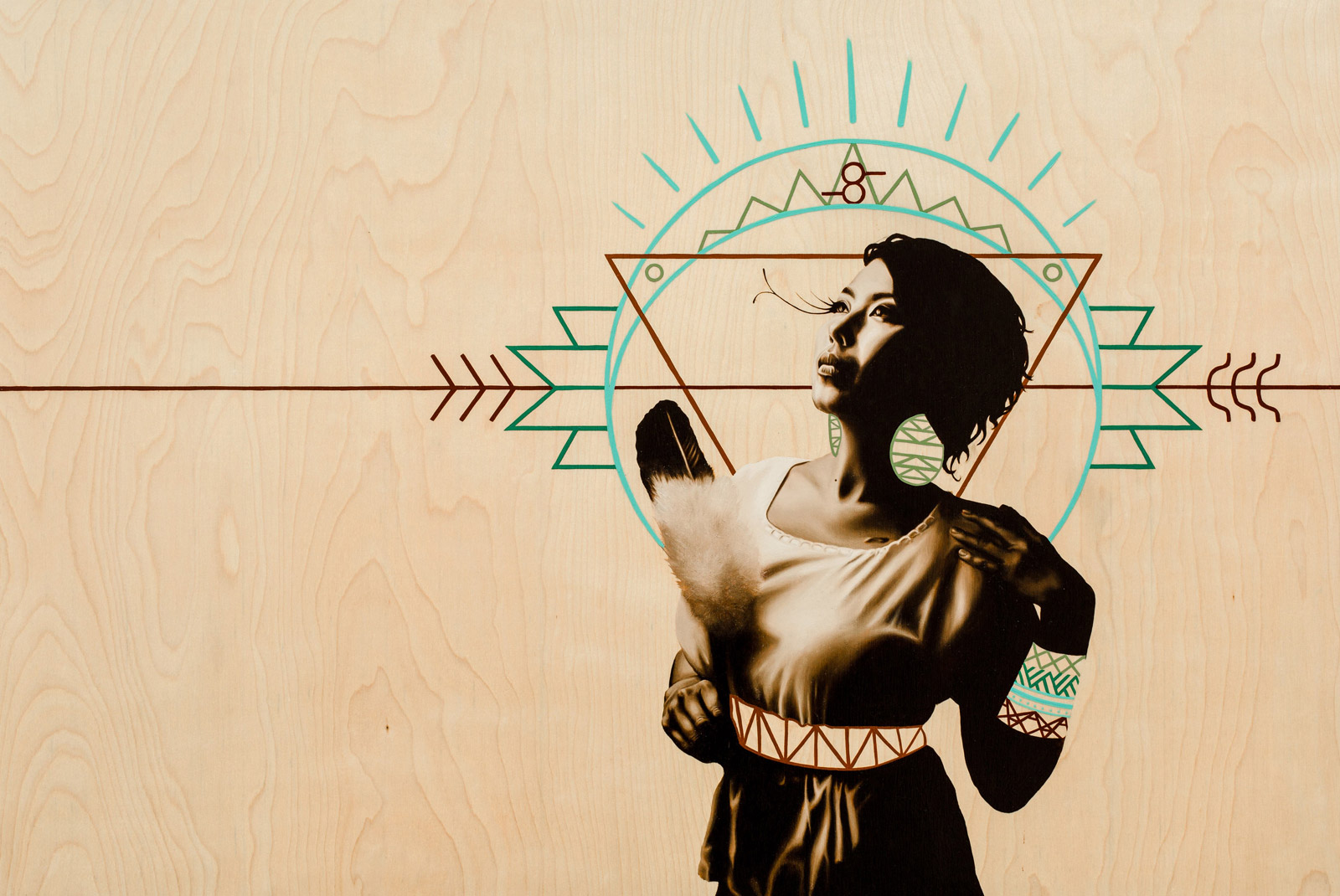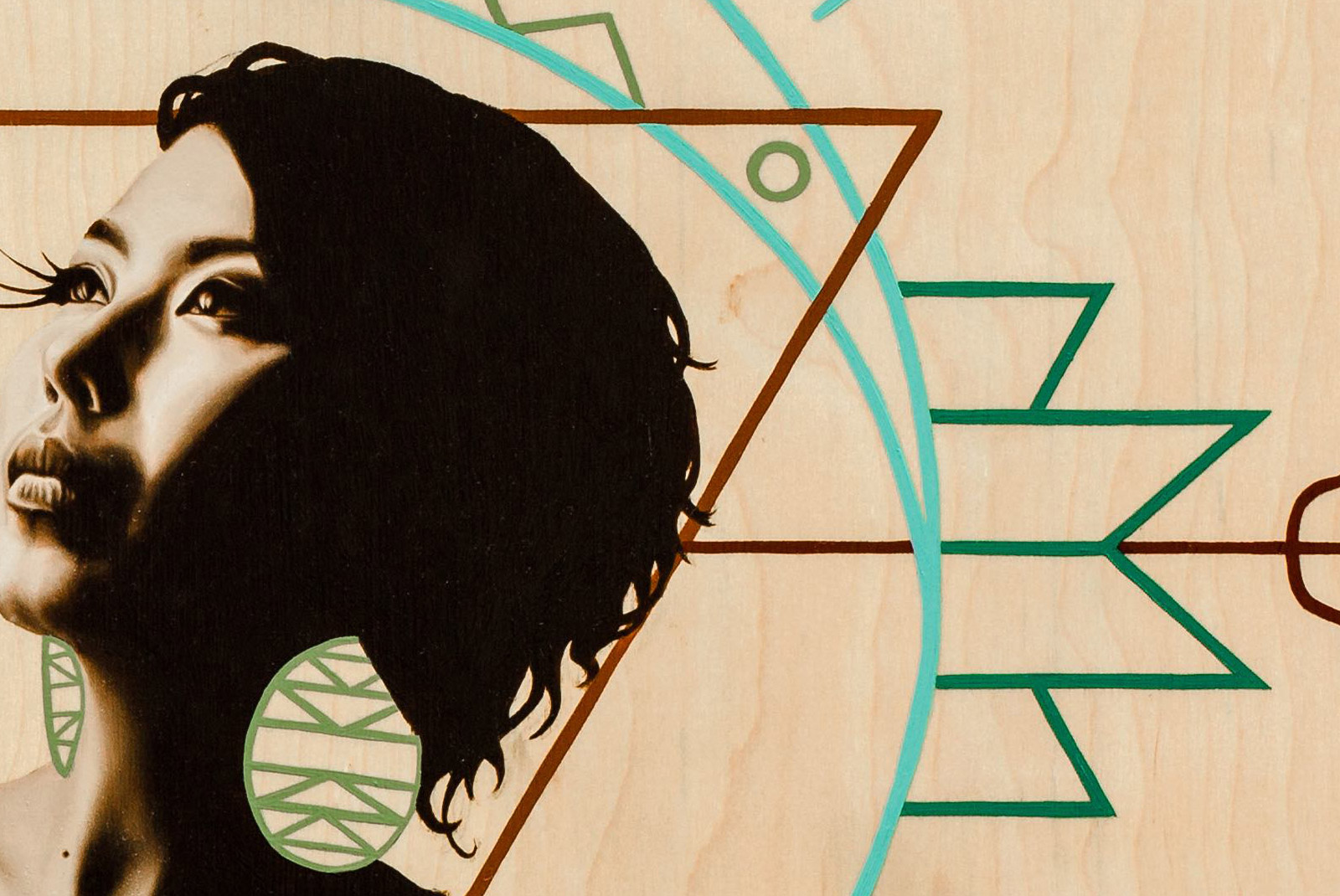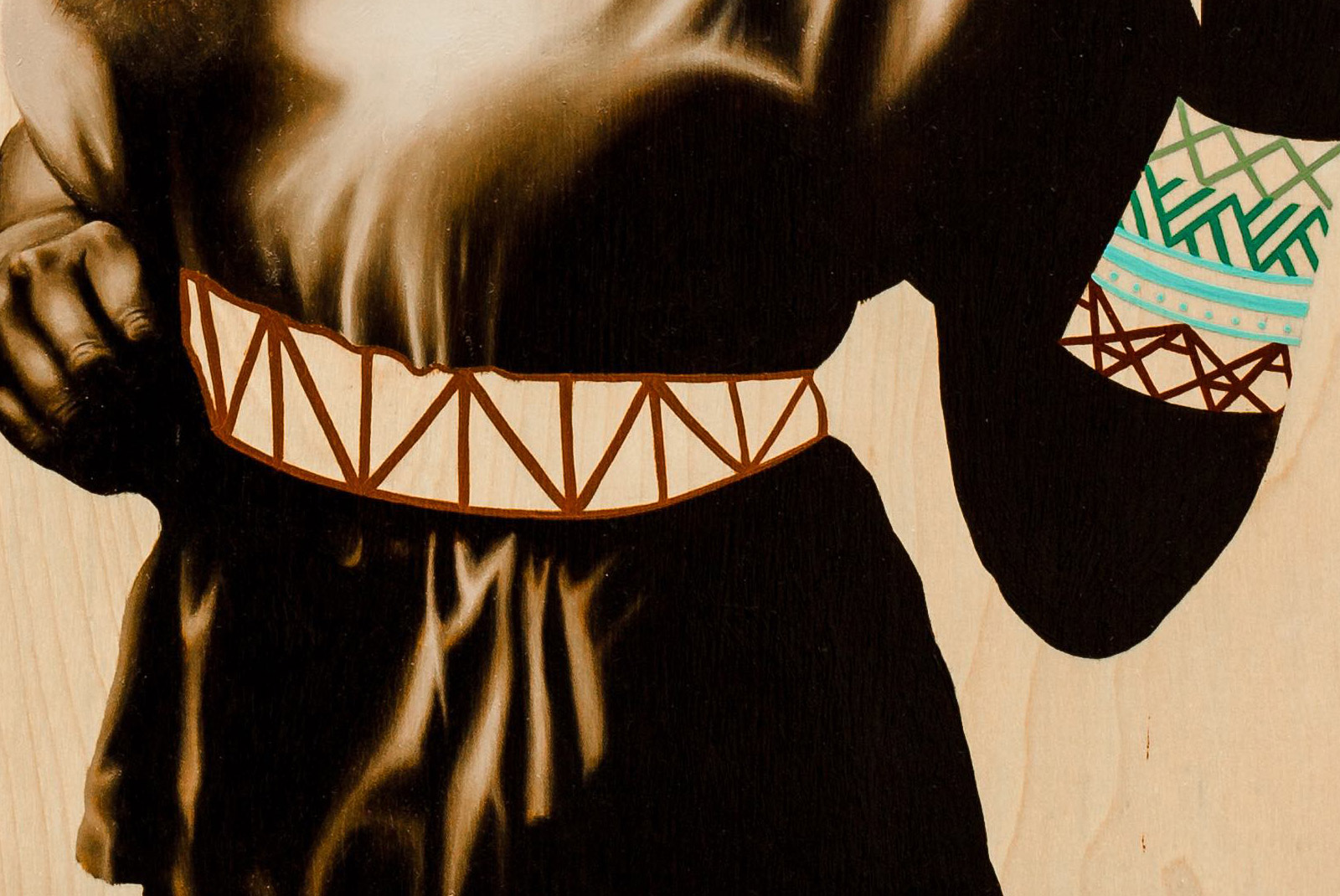Tashina

This painting narrates the story of Tashina. Tashina is Diné and a cancer survivor. She was
diagnosed with stage 3 breast cancer at age 29 on April 2nd 2014. Tashina was told that she
had a 50/50 chance of surviving and would never be able to have kids. She was also told that
she would have to get a double mastectomy. The upside down triangle with two circles in the
corners represents the yoni, her ovaries and her breasts. Despite her doctor’s previsions,
Tashina is cancer free, fertile and has both of her breasts.
She attributes most of her healing process to traditional medicines from her culture that included
medicinal roots and flowers. These medicines are represented on the red horizontal line. The
roots are depicted on the left side. After the line passes through her, the Diné symbol of the
cactus flower emerges in full bloom. Part of her healing process also meant that she was not
allowed to be in sunlight very much. And because of this, she spent a lot of time running in the
mountains at night, with only the moonlight to guide her… the nightsun. The nightsun is shown
behind her in turquoise with rays of light shining above and the mountains that she traveled, and
that helped nurse her back to health, are illustrated in green.
In her first year, she completed chemotherapy, surgery and radiation that made her lose her hair
(one of her most prized possessions). In Diné tradition, when a person dies their hair is cut off.
And for Tashina, the cutting of her hair was necessary in order to let her cancer die. She
received 16 rounds of chemotherapy and every time she received a treatment, a hummingbird
visited her and danced in the window. She feels that this was her grandmother’s spirit visiting
her. Hummingbirds, in Diné culture, are spirit helpers and ferocious fighters despite their size
and for Tashina, she was fighting for her life. The symbol for the hummingbird is shown in the
mountains and the pattern on her earrings is the pattern found on her grandmother’s rug. The
warrior’s arm brace patterns on her left arm represent her fight against cancer.
Lastly, she is portrayed with an eagle’s feather in her hand, a gift from her sister and a symbol of
prayer. Her family was integral for her recovery and they grew closer and stronger as a result.
I use the technique of chiaroscuro (high contrast from light to dark) to reference how a woman’s
depth can only be rendered with her darkest of shadows present as well as her light. I want to
step away from the assumption that the female nude has to be reduced to dehumanized sex
symbol or an allegorical figure of purity to be well received. The personal stories of female
subjects are scarcely told and often censored. I intend to show that beauty is incomplete without
the humanizing experiences that a woman obtains throughout her life. I utilize wood as the
foreground to illustrate the raw nature of the content.



